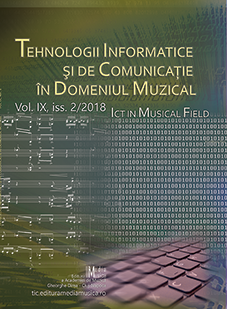Aplicații ale noilor tehnologii în artele spectacolului
Application of New Technologies in Performing Arts Institutions
Author(s): Nichimiș CristinaSubject(s): Fine Arts / Performing Arts, Music
Published by: MediaMusica
Keywords: new technologies; digital needs; performing arts; good practices; digital communication; digital marketing;
Summary/Abstract: Cultural institutions face today a series of major changes regarding the consumer habits and the needs of the public, largely determined by the widespread use of new technologies. Unidirectional communication, the lack of interaction and the failure to adapt the communication channels and instrument are all problems that have determined and continue to cause a decline in cultural consumption.The needs and expectation of today’s public, especially young but not only, focus on a few main coordinates: ubiquity (the need to be permanently connected and to have access to information anywhere, anytime), personalization (the possibility to adapt one’s consumption habits or experience according to their own needs) and simplicity of use (the possibility to access information in the quickest and most efficient way possible, preferably without a great effort).These new needs of the public, determined by the omnipresence of technology in our lives, have profoundly changed the relationship between cultural institutions and its audiences, have affected the participation and the consumption of artistic products and have forced institutions to open more, to become more flexible and more adaptable.The modes of interaction between a cultural institution and its audiences have today a complex structure, with more and more institutions beginning to introduce different ways to address these needs in their activities or even their administrative structures.At international level, there are a number of good practices in the use of new technologies, which mainly focus on the following objectives: distribution / dissemination of artistic content; education, accessibility, game/play; optimizing the marketing, sales and fundraising processes; reshaping the artistic experience / user generated content; digitizing a historical archive. From the analyzed cases, the most in-depth and relevant applications are found especially in the English-speaking countries, but also in Germany, Denmark and Italy.In order to be effective, however, the use of new technologies in cultural institutions should not be seen as an end in itself or in isolation as an “emergency solution”, but as a tool - a transversal line integrated into the projects and activities of the institution as a whole.
Journal: Tehnologii informatice şi de comunicaţii în domeniul muzical
- Issue Year: IX/2018
- Issue No: 2
- Page Range: 63-70
- Page Count: 8
- Language: English, Romanian
- Content File-PDF

